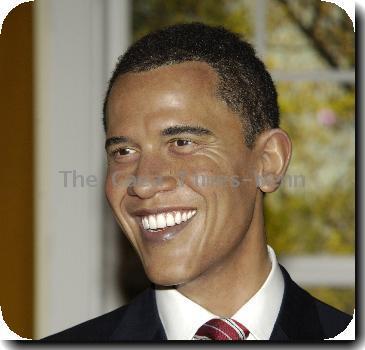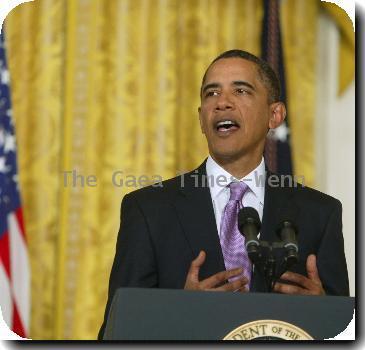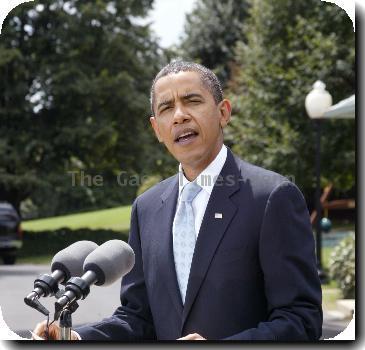Massive Chile earthquake spawns tsunami, threatens Pacific Rim, Hawaii warning sirens
By Jaymes Song, APSaturday, February 27, 2010
Tsunami races across Pacific, threatens Hawaii
EWA BEACH, Hawaii — A tsunami triggered by the Chilean earthquake raced across the Pacific Ocean on Saturday, threatening Hawaii as it rushed toward the U.S. West Coast and hundreds of islands from the bottom of the planet to the top.
Sirens blared in Hawaii to alert residents to the potential waves. As the waves expected arrival drew near, roads into tourist-heavy Waikiki were closed off. Police patrolled main roads, telling tourists to get off the streets
On several South Pacific islands hit by a tsunami last fall, police evacuated tens of thousands of coastal residents.
The first waves in Hawaii were expected to hit around midday Saturday (4 p.m. EST; 2100 GMT) and measure roughly 8 feet (2.5 meters) at Hilo. Most Pacific Rim nations did not immediately order evacuations, but advised people in low-lying areas to be on the lookout.
Unlike other tsunamis in recent years in which residents had little warning, emergency officials along the Pacific on Saturday had hours to prepare and decide on evacuating residents.
“We’ve got a lot of things going for us,” said Charles McCreery, the director of the Pacific Tsunami Warning Center, which issues warnings to almost every country around the Pacific Rim and to most of the Pacific island states. “We have a reasonable lead time.”
In Hawaii, where temperatures sat in the 80s, boats and people near the coast were being evacuated. The normally bustling beaches were empty. Hilo International Airport, located along the coast, was closed.
In Honolulu, residents lined up at supermarkets to stock up on food and batteries. Cars lined up 15 long at several gas stations.
“These are dangerous, dangerous events,” said John Cummings, spokesman for the Honolulu Emergency Management Department.
The Navy was moving more than a half dozen vessels Saturday to try to avoid damage from the tsunami. A frigate, three destroyers and two smaller vessels were being sent out of Pearl Harbor and a cruiser out of Naval Base San Diego, the Navy said.
The ships will be safer out at sea than if they were tied to piers where they could be banged around by the waves, the Navy said.
In Tonga, where nine people died in a Sept. 29 tsunami, police and defense forces began evacuating tens of thousands of people from low-lying coastal areas as they warned residents that waves about three feet (one meter) high could wash ashore.
“I can hear the church bells ringing to alert the people,” National Disaster Office deputy director Mali’u Takai said.
On the island of Robinson Crusoe, a huge wave from the tsunami covered half the village of San Juan Batista and three people were missing, said Ivan de la Maza, the superintendent of Chile’s principal mainland port, Valparaiso.
A helicopter and a Navy frigate were enroute to the island to assist in the search, he said.
A tsunami warning — the highest alert level — was in effect for Hawaii, Guam, American Samoa, Samoa and dozens of other Pacific islands. An advisory — the lowest level — includes California, Oregon, Washington state, parts of Alaska, and coastal British Colombia.
British Columbia is hosting the Winter Olympic Games, but provincial officials said the venues are not under threat.
U.S. President Barack Obama says the government is preparing for a tsunami and he wants people in Hawaii, American Samoa and Guam to follow the instructions of local authorities.
American Samoa Lt. Gov. Aitofele Sunia called on residents of shoreline villages to move to higher ground. Police in Samoa issued a nationwide alert to begin coastal evacuations. The tsunami is expected to reach the islands Saturday morning.
In French Polynesia, tsunami waves up to 6 feet (2 meters) high swept ashore, damaging parts of the coast.
Meanwhile, disaster management officials in Fiji said they have been warned to expect waves of as high as 7.5 feet (2.3 meters) to hit the northern and eastern islands of the archipelago and the nearby Tonga islands.
Waves were likely to hit Asian, Australian and New Zealand shores within 24 hours of Saturday’s quake. A tsunami wave can travel at up to 600 mph, said Jenifer Rhoades, tsunami program manager at the National Weather Service in Washington, DC.
Some Pacific nations in the warning area were heavily damaged by a tsunami last year.
In last fall’s tsunami, spawned by a magnitude-8.3 earthquake, also killed 34 people in American Samoa and 183 in Samoa. Scientists later said that wave was 46 feet (14 meters) high.
The tsunami warning center said the waves reached the islands so quickly residents had only about 10 minutes to respond to its alert.
During the devastating December 2004 Indian ocean tsunami, there was little to no warning and much confusion about the impending waves. The tsunami eradicated entire coastal communities the morning after Christmas, killing 230,000 people.
In Honolulu, every TV was showing the news. Convenience stores and McDonald’s and Burger King restaurants shut down. A few people were on the famed beach, including joggers on the sidewalk, but far fewer than normal. Most seemed to be watching the ocean.
In Hilo, officials cordoned off the first three blocks next to the beach. A few people watched the still ocean as a whale swam off the coast, but streets were mostly empty as tsunami sirens blared. Gas stations had long lines, some 10 cars deep.
The SackNSave grocery store was filled with people buying everything from instant noodles to beer. Shelves with water were mostly empty, save a few bottles.
“They are buying everything we got,” clerk Memory Phillik said.
Hawaii Gov. Linda Lingle declared a state of emergency. She said leprosy patients from the Kalaupapa settlement on Molokai have been moved to higher ground. Helicopters are standing by if the patients need to be moved to a safer area.
Past South American earthquakes have had deadly effects across the Pacific.
A tsunami after a magnitude-9.5 quake that struck Chile in 1960, the largest earthquake ever recorded, killed about 140 people in Japan, 61 in Hawaii and 32 in the Philippines. It was about 3.3 to 13 feet (one to four meters) in height, Japan’s Meteorological Agency said.
Japanese public broadcaster NHK quoted earthquake experts as saying the tsunami would likely be tens of centimeters (inches) high and reach Japan in about 22 hours. A tsunami of 28 centimeters (11 inches) was recorded after a magnitude-8.4 earthquake near Chile in 2001.
The Joint Australian Tsunami Warning Center issued a tsunami warning Saturday night for a “potential tsunami threat” to New South Wales state, Queensland state, Lord Howe Island and Norfolk Island. Any wave would not hit Australia until Sunday morning local time, it said.
New Zealand officials warned that “non-destructive” tsunami waves of less than three feet could hit the entire east coast of the country’s two main islands and its Chatham Islands territory, some 300 miles east of New Zealand.
Seismologist Fumihiko Imamura, of Japan’s Tohoku University, told NHK that residents near ocean shores should not underestimate the power of a tsunami even though they may be generated by quakes on the other side of the ocean.
“There is the possibility that it could reach Japan without losing its strength,” he said.
Associated Press writers Mark Niesse, Audrey McAvoy, David Briscoe and Greg Small in Honolulu, Kristen Gelineau in Sydney, Chris Havlik in Phoenix, Ray Lilley in Auckland, New Zealand, Eric Talmadge in Tokyo, Alan Clendenning in Sao Paulo, Brazil, Pauline Jelinek in Washington and Charmaine Noronha in Toronto contributed to this report.
Tags: American Samoa, Asia, Australia, Australia And Oceania, Barack Obama, Chile, District Of Columbia, East Asia, Emergency Management, Ewa Beach, Hawaii, Hilo, Honolulu, Japan, Latin America And Caribbean, New Zealand, North America, Quake-tsunami, Samoa, South America, Tonga, Tsunami, United States, Washington





